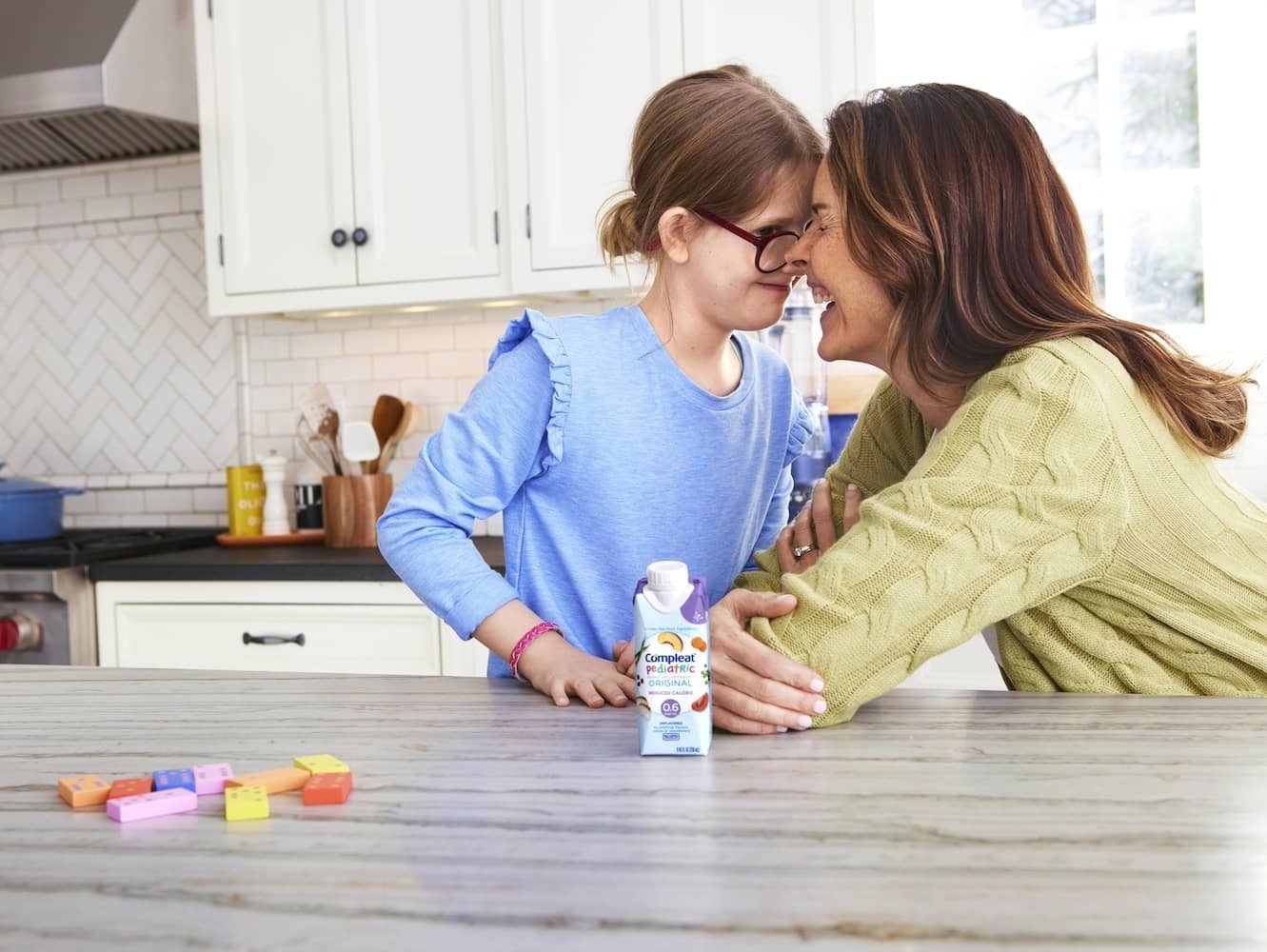Hearing all the buzz these days about tube-feeding formulas made with real food ingredients? If you are presently using a standard tube-feeding formula that doesn’t contain real food ingredients, you might be wondering how to switch to a formula that does. It may not be as simple as swapping out A for B, but with the right information and good communication with your healthcare team, you can approach the transition in the best way possible.
Facts List:
- Talk to Your Doctor or Registered Dietitian Nutritionist
- Discuss Potential Benefits
- Discuss the How’s
- Know What to Expect
- Ask Yourself Why
There’s a wide range of pediatric and adult tube-feeding formulas available to meet your unique nutritional requirements and your feeding schedule. Real food tube-feeding formulas are a type of formula made from a blend of real food ingredients such as chicken, grains, vegetables, and fruit. They may be suitable for adults and children who have difficulty digesting tolerating a standard formula, or for those who will require tube feeding for a long period of time. A real food formula can also help give you more variety.
If you are presently using a standard tube-feeding formula that doesn’t contain real food ingredients, you might be wondering how to switch to a formula that does. It may not be as simple as swapping out A for B, but with the right information, and good communication with your healthcare team, you can approach the transition in the best way possible. In this blog post, we’ll walk you through the steps of transitioning to a real food tube-feeding formula such as Compleat® Organic Blends.
Talk to Your Doctor or Registered Dietitian Nutritionist. Your present formula has most likely been recommended by your doctor based on medical diagnosis, unique nutritional requirements, age, administration of the formula, and feeding schedule. However, if the presence of real food is important to you, it is completely acceptable to express this to your healthcare team. It’s easy to feel insecure about questioning doctor’s orders, especially if you’re responding favorably to the treatment plan, but self-advocacy is critical in today’s healthcare environment.
Jot down your reasons for wanting to consider a formula switch. Ask your doctor about any downsides for making this change. Talk about the details surrounding a formula that contains real food ingredients and why that matters to you. Have a dialogue. Your healthcare is a partnership between you and your doctor and dietitian, so feel confident in asking the questions to understand what’s best for you or your loved one.
Discuss Potential Benefits. Doctors are inundated each day with information on a myriad of topics, from conditions to medications to policies. However, you live and breathe your tube-feeding journey. Therefore, you can share the things you know to guide the conversation. Help your doctor understand the benefits of real food tube-feeding formulas by asking about improvements in diarrhea or constipation or overall stool regularity and consistency, the impact on tolerance, decreased retching and gagging, and even the potential improvement for transitioning to a typical food-based diet one day.
For those who want organic/non-GMO, or plant-based formulas, or a formula that tastes and smells more pleasant than a standard tube-feeding formula, the benefits can tie back to personal preference. Lifestyle can play a role, too. For example, if making a feeding from scratch using real food ingredients is a challenge given your schedule, but you want the benefits of real food ingredients, then transitioning to a formula such as Compleat® Organic Blends can be an appropriate option.
Discuss the How’s. The operative word in making a change in tube-feeding formulas is transitioning, which implies an easing-into the process. For example, you and your healthcare team might decide that switching out one feeding per day is the way to approach change, or you can try gradually increasing the volume of each feeding. “When making changes, only change one thing at a time,” says The Oley Foundation. “Go slowly and wait a few days before making another small change. Making too many changes at once will make it challenging to know what is or is not working.” If you recently adjusted your feeding schedule, and you’re waiting to see how your body responds, it may not be the ideal time to transition to a different tube-feeding formula. Your doctor or dietitian can guide you.
Know What to Expect. Anytime you attempt a transition to a new formula, there are things to consider such as whether or not the formula is sole source nutrition, hang time recommendations, and consistency which can translate to how well the formula will flow with your present tube and delivery system. Certain formulas are not intended for gravity feedings or for use with a J-tube.
If your doctor gives you the green light to transition to an organic real food formula such as Compleat® Organic
Blends, remember to provide additional water as a tube-feeding flush before and after each feeding. Because Compleat® Organic Blends is made from USDA certified organic fruit and vegetable purees, the formula has a consistency comparable to applesauce, so it’s best to administer through a 12 French tube or a larger gastrostomy tube with a syringe. The pressure provided by the syringe makes it easier to administer a thicker formula. Talk to your healthcare team about diluting the formula if using a pump-assisted feeding or if feeding directly into the small intestine.
Ask Yourself Why. When considering a formula switch, some might argue the “if it isn’t broken” mindset. This is valid. However, along with the information we know today about organic real food ingredients, there’s also an emotional component around how we feel about the nutrition we put in our bodies. If your family consumes organic fruits and vegetables each day because you’ve made that choice, then it's understandable if you want that option for everyone around the table. This brings us back, full circle, to the first point—self-advocacy and the importance of talking to your healthcare team. You’re in this together, and if transitioning to a tube-feeding formula with real food ingredients makes sense to everyone on the team, then it’s the team’s job to figure out if and how that can happen.
PLEASE NOTE: Changes to your tube-feeding formula should only be done under medical supervision. If intolerance or discomfort occurs, notify your healthcare team. We care about your well-being!
Stay up to date with our Insights!

 Blog
Blog

